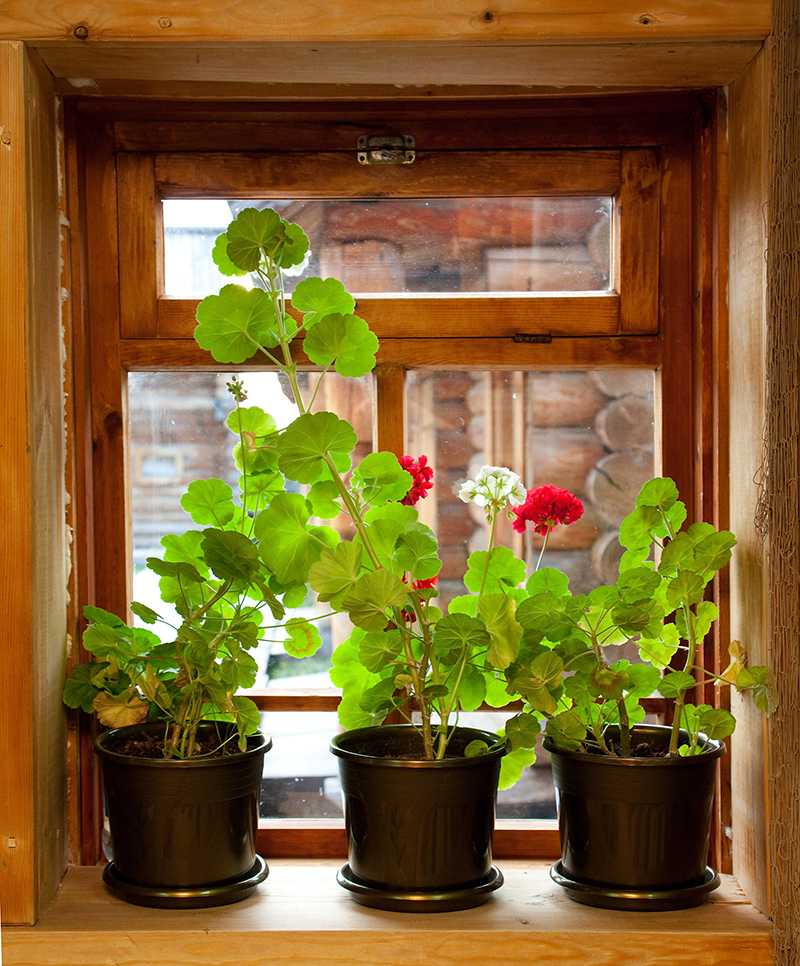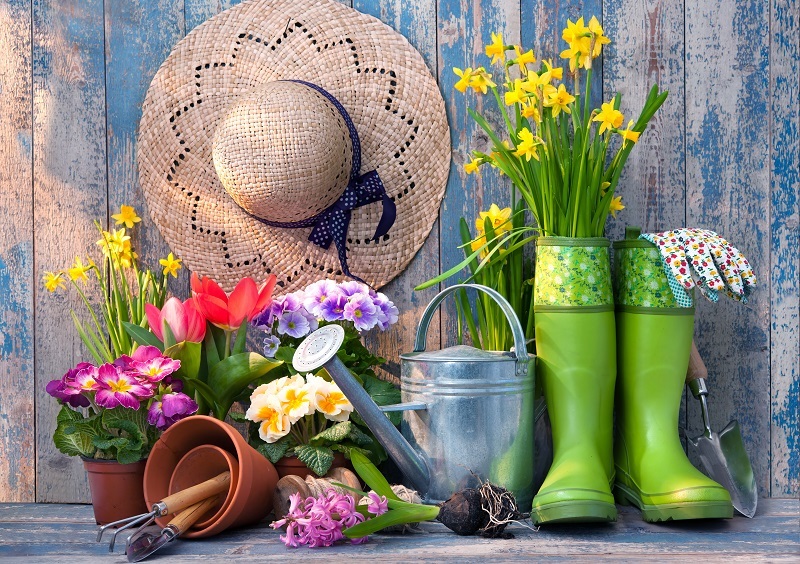Keeping your flowers fresh with 3 easy techniques
Posted on 13/08/2025
Keeping Your Flowers Fresh with 3 Easy Techniques
There is nothing quite like the joy that a bouquet of fresh flowers can bring. The vibrant colors, the captivating scents, and the natural beauty they add to any room make flowers an irresistible addition to our homes and lifestyles. However, fresh flowers are notoriously fleeting, and it can be disheartening to see your beautiful blooms fade too quickly. The good news is that with a few simple, science-backed techniques, you can significantly extend the life of your flowers and keep them looking beautiful for days--or even weeks--longer.
In this article, we will uncover three effortless yet highly effective methods to preserve your cut flowers and ensure lasting freshness. Whether you've purchased flowers from a florist, received a romantic bouquet, or picked stems from your own garden, these strategies will help you savor their beauty for as long as possible.

Why Do Cut Flowers Wilt So Quickly?
Before diving into the best methods for keeping your flowers fresh, it's helpful to understand why they wilt in the first place. Once flowers are cut, they lose access to their natural supply of nutrients and water from the plant. As a result:
- They rapidly dehydrate.
- They're exposed to bacteria and fungi that cause decay.
- Their stems can become blocked by air bubbles, making it harder to absorb water.
Knowing this, your goal is to restore water to the stems, minimize bacterial growth, and maximize nutrient uptake. Below, we reveal three tried-and-true strategies for keeping your flowers fresh longer.
Technique 1: Prepare Your Flowers with Care
Step-by-Step Flower Preparation for Prolonged Freshness
Proper preparation is the foundation of maintaining fresh cut flowers. From the moment you receive or cut your blooms, the way you handle them will determine how long they last.
-
Trim the Stems Correctly:
Always trim 1 to 2 inches off the stems at a 45-degree angle using clean, sharp scissors or garden shears. This increases the surface area for water absorption and prevents the stem from sitting flat against the vase bottom, which can block water uptake. -
Remove Lower Leaves:
Any leaves that will be below the water line should be removed. Submerged foliage can quickly rot and harbor bacteria that will hasten wilting. -
Use Clean Vases:
Wash your vase with hot, soapy water and rinse thoroughly. Clean containers prevent harmful bacteria from colonizing and damaging your flowers. -
Use Lukewarm Water:
Fill your vase with lukewarm (not cold) water. Flowers absorb tepid water faster and more easily than cold water, which can shock delicate stems.
Why Preparation Matters for Flower Longevity
Taking these preparatory steps ensures your flowers can hydrate immediately and reduces the risk of premature decay. Proper trimming and stripping of leaves also set the stage for the next technique: maintaining an ideal environment.
Technique 2: Master the Art of Water and Nourishment
Keep Flowers Fresh with Regular Water Changes
Water is the life source for your cut flowers. Stale, bacteria-laden water is the leading cause of early wilting in bouquets. Here's how to maintain fresh flowers at home with proper hydration:
-
Change Water Daily:
Every 24 hours, pour out the water, rinse the vase, and refill it with fresh, lukewarm water. This practice removes bacteria and gives your flowers a new supply of oxygenated water. -
Re-trim Stems:
When changing the water, snip a small section off each stem. This opens up the vascular system for improved water uptake. -
Add Flower Food:
Most bouquets come with a small packet of flower preservative. Use this as directed--it contains a mix of nutrients and antibacterial substances to support flower health. -
DIY Flower Food:
If pre-made flower food isn't available, you can easily make your own:- Mix 1 quart of water, 2 tablespoons lemon juice, 1 tablespoon sugar, and 1/2 teaspoon bleach.
The Science Behind Nourishing Fresh Cut Flowers
Why does this work? Well, bacteria in water clog flower stems and restrict their ability to take in water and nutrients. Regular cleaning and nutritional supplements drastically reduce bacterial levels and help flowers stay hydrated and vibrant. If you want your bouquets to last longer, water and feed them just as you would any living plant!
Technique 3: Optimize Temperature and Light
Protect Flowers from Heat and Sun
Most people don't realize that displaying your bouquet in the wrong spot could shorten its life by several days. Fresh flowers are sensitive to both temperature and light.
-
Keep Flowers Cool:
Place arrangements away from direct heat sources (radiators, TVs, appliances) and out of sunbeams. Excess warmth accelerates evaporation and floral aging. -
Avoid Drafts and Fruits:
Moving air and nearby fruit bowls speed up wilting. Ripening fruit releases ethylene gas, a natural plant hormone that signals flowers to drop petals. -
Nighttime Chilling:
If possible, move your arrangement into the fridge or a cool basement overnight. The chilled air slows metabolic activity, just like at the florist's shop. -
Indirect Light:
The best place for fresh bouquets is in a room with bright but indirect daylight. This keeps colors lively without overheating petals.
Temperature Control: The Hidden Key to Long-Lasting Flowers
Temperature is one of the most overlooked factors in keeping flowers fresh at home. Simply moving a vase from a sunny windowsill to a cool nook can make a dramatic difference. Combined with the previous two techniques, you'll enjoy fresher, longer-lasting blooms with minimal daily effort.
Bonus Tips to Maximize Flower Freshness
Now that you know the three core techniques for keeping your floral arrangements fresh, here are a few extra tips and answers to common questions that will help you achieve the best results:
-
Remove Wilting Flowers Promptly:
Spent blooms give off compounds that can accelerate decay in the rest of the bouquet. Remove any flowers as soon as they begin to wilt. -
Don't Overcrowd:
Avoid stuffing too many stems in one vase. Air circulation around each stem helps prevent rot and allows each flower enough space to thrive. -
Rinse and Repeat:
Repeating the water change, re-trimming, and positioning routines across the life of your bouquet may seem tedious, but it's the simplest way to prolong flower shelf life. -
Choose Hardy Varieties:
Some flowers naturally last longer. Chrysanthemums, carnations, alstroemeria, and lilies are known for outstanding vase longevity, while tulips and lilies may have shorter spans.
Addressing Common Myths About Flower Preservation
Should You Add Pennies, Aspirin, or Soda?
Many age-old "hacks" for extending the life of cut flowers abound, but not all are effective. Here's the truth:
- Pennies: The copper in old pennies can somewhat inhibit bacterial growth, but it's far less effective than bleach or commercial flower food.
- Aspirin: While aspirin may lower water pH, it doesn't significantly benefit most flowers. Use lemon juice instead.
- Soda: The sugar in soda can feed flowers, but it also promotes bacterial growth unless used with a cleaning agent (like bleach).
Stick to scientifically-proven methods for the best results!

Frequently Asked Questions on Flower Freshness
How long do cut flowers normally last?
With standard care, most bouquets last 5-7 days. Applying the easy techniques outlined above can extend this to 10-14 days for hardier species.
Can I revive wilted flowers?
Sometimes, yes! If flowers have wilted from lack of water, try snipping the stems again, placing them in hot water for 30 seconds (to force out any air bubbles), and then moving them to room-temperature water.
Is it OK to mix flower types?
Mixing is fine, but remember that short-lived varieties will fade faster and may break down and release substances that affect hardier stems. Remove faded flowers promptly to prevent this problem.
Conclusion: Enjoy Your Beautiful, Long-Lasting Bouquets
Fresh flowers symbolize joy, appreciation, and the beauty of nature in our everyday lives. With just a little mindful care and the three simple strategies discussed here--thoughtful preparation, vigilant hydration and nourishment, and environment optimization--you can dramatically prolong the life and vibrancy of your floral arrangements at home.
Remember to trim and clean your stems, change water frequently, use appropriate nutrients, and protect your bouquet from heat and direct sun. By keeping your flowers fresh with these easy techniques, you'll enjoy their color, fragrance, and spirit for much longer--making every bouquet a blooming success.
Let your flowers last, brighten your living space, and celebrate each day with the beauty that only fresh flowers can bring!





